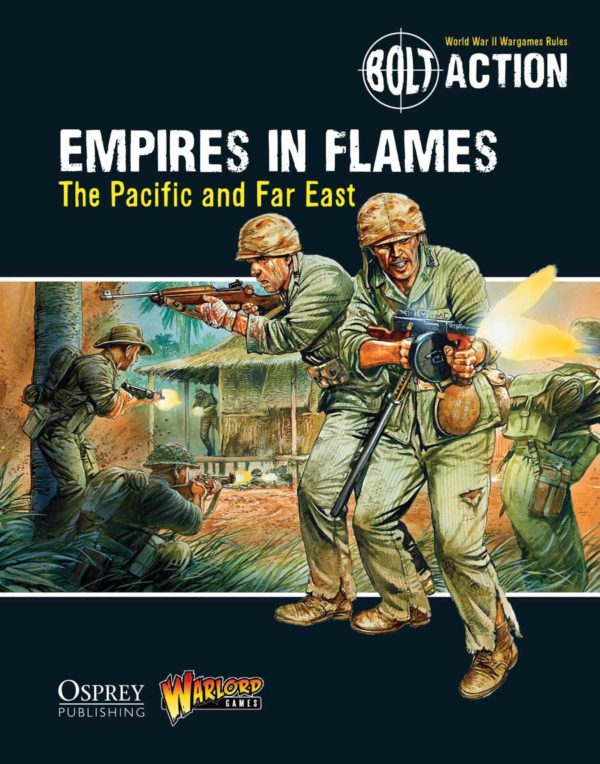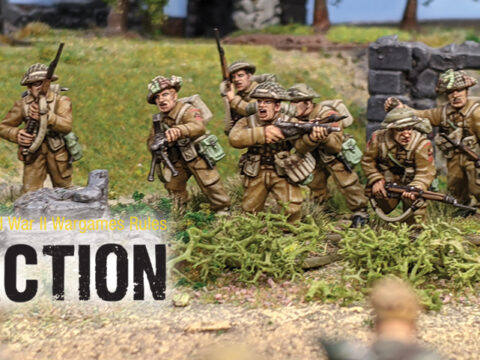Looking at a brief history of the conflict often forgotten as Empires erupt in flames across the Pacific
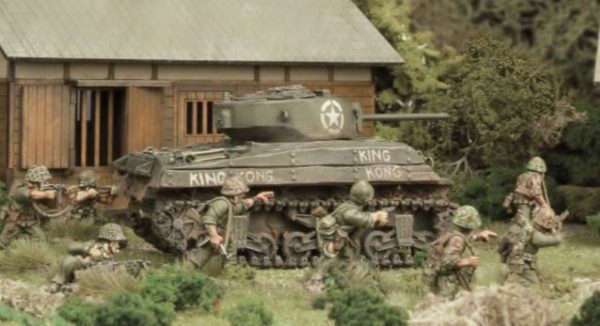
A brief history of the Pacific theatre in World War II
In late 1941 the war between Japan and China, began in 1937, was drawing to a bloody stalemate. The Japanese invaded French Indo-China to further surround their Chinese opponents. This attack and the terror tactics used by the Japanese against the Chinese population in the occupied territories caused the colonial powers that had the highest stakes in the area – Britain, Australia, the Dutch government in exile and the US – to impose total trade embargoes against Japan.
Japanese Expansion
This ‘hostile act’ that starved them of vital resources like oil, iron and steel in turn convinced the Japanese to attack these colonies and seize by force the resources they had been denied. Though expected, the Japanese attacks that started the Pacific War on the 7th of December 1941 were so well planned and ferociously executed that the western powers were soundly defeated – their defenses crumbling with stunning rapidity.
The US Pacific fleet was all but annihilated in the surprise attack on Pearl Harbour, which drew the Americans directly into World War II. The British fleet in South East Asia was similarly crippled. By mid 1942, the Japanese Imperial Army had conquered all of the Dutch East Indies, the British territories of Malaya and Burma, stopping at the very border with India, the US colony of the Philippines as well as the many chains of islands of the Pacific, including most of New Guinea, from which they had proceeded to bomb northern Australia. During these campaigns, the Japanese had inflicted on the British and Americans some of the worst defeats in their military history. And all of this while still maintaining their pressure against the Chinese. The Soviets, not very keen to open another front while desperately defending their homeland against the German invasion, kept their neutrality agreement with the Japanese.
Allied Counter-Attack
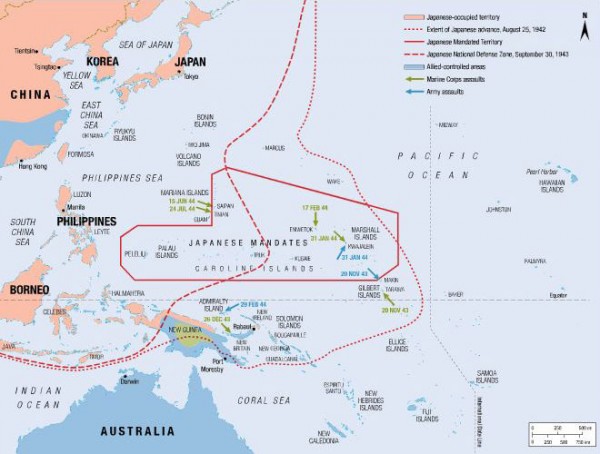
Pacific Theater of Operations 1943–44 courtesy of Osprey Publishing
This was the very high tide of the expansion of the Empire of Japan. The Japanese strategy relied on the western powers negotiating a peace at this point, which would have allowed Japan to retain much of the territory it had grabbed. Unfortunately for them, the Japanese had underestimated the resolve of the Allies, and particularly the immense industrial might that America brought to bear, converting her massive economy to war production. Soon the Americans started sending wave after wave of new ships and fighting men against the Japanese outer territories, beginning with the Solomon Islands, where the US Marines for the first time inflicted a sound defeat upon the Japanese at the battle of Guadalcanal.
The British, relieved in North Africa by the American intervention, were able to send much needed reinforcements to their beleaguered forces in India, turning the tide in the forests of Burma and soon starting to counter-attack and push back the over-stretched Japanese.
Naval Battles & Island Hopping
Eventually the Japanese Navy, which for a while could arguably claim to be the best in the world, suffered decisive defeats at the battles of Coral Sea and Midway, and later at Leyte Gulf, when the Japanese effectively lost control of the Pacific once and for all. The US started an ‘island-hopping’ campaign of amphibious invasions against key Japanese bases, choosing to bypass and isolate others. The Marines learned many a bloody lesson in the fighting against the stubborn Japanese soldiers, honing their waterborne assault tactics in the invasion of island after island – Tarawa, Saipan, Philippines, Iwo Jima, Okinawa.
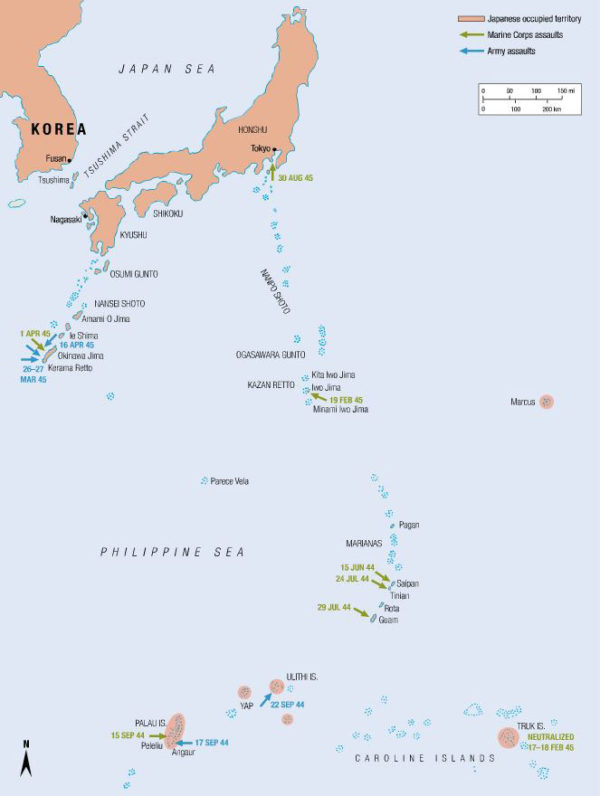
Pacific Theater of Operations 1944–45 courtesy of Osprey Publishing
After the capture of Iwo Jima, the US Air Force had began a remorseless strategic bombing of Japanese cities, which together with the intense submarine blockade inflicted grievous conditions on the Japanese population. But the Japanese spirit of resistance to invasion remained strong, and at Okinawa large numbers of the civilian population fell casualty to the fighting. Eventually, calculating that an invasion of mainland Japan would caused too many casualties on all sides, the American government decided to destroy the cities of Hiroshima and Nagasaki with atomic bombs. This, compounded with the Soviets finally breaking their neutrality and attacking the Japanese in Manchuria, broke the Japanese will to fight and their surrender was signed on board USS Missouri in Tokyo Bay on the 2nd of September 1945, ending World War II.
Explore in more depth the war in the Pacific with Empire in Flames and the Bolt Action Pacific ranges

